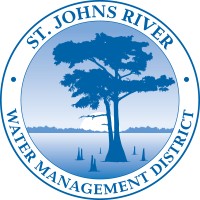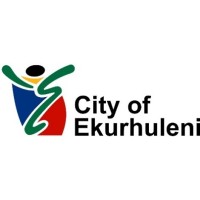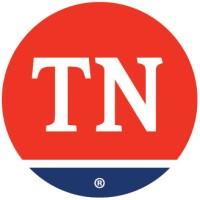
St. Johns River Water Management District Company Cyber Security Posture
sjrwmd.comThe St. Johns River Water Management District (SJRWMD) is one of five Florida water management districts that is responsible for managing groundwater and surface water resources in Florida. SJRWMD covers an 18-county region in northeast and east-central Florida. The Florida Department of Environmental Protection has general supervisory authority over the water management districts. The five water management districts were established in 1972 by Chapter 373, Florida Statutes, as independent special districts and were empowered by the electorate in 1976 to assess ad valorem taxes to fund the management of the state’s water resources, and related land resources, to benefit people and the environment. Each water management district is administered by a Governing Board composed of residents appointed by Florida’s Governor and confirmed by the Florida Senate. Core Missions • Water supply — To implement a regional strategy to provide sufficient water for users and the environment. • Water quality — To protect and improve water quality. • Natural systems — To protect and improve natural systems. • Flood protection — To prevent increases in flooding and operate and maintain SJRWMD’s regional flood control projects.
SJRWMD Company Details
st.-johns-river-water-management-district
479 employees
5662.0
922
Government Administration
sjrwmd.com
Scan still pending
ST._3139107
In-progress
Between 900 and 1000
This score is AI-generated and less favored by cyber insurers, who prefer the TPRM score.
 SJRWMD Global Score
SJRWMD Global Score.png)

St. Johns River Water Management District Company Scoring based on AI Models
| Model Name | Date | Description | Current Score Difference | Score |
|---|---|---|---|---|
| AVERAGE-Industry | 03-12-2025 | This score represents the average cybersecurity rating of companies already scanned within the same industry. It provides a benchmark to compare an individual company's security posture against its industry peers. | N/A | Between 900 and 1000 |
St. Johns River Water Management District Company Cyber Security News & History
| Entity | Type | Severity | Impact | Seen | Url ID | Details | View |
|---|---|---|---|---|---|---|---|
| St. Johns River Water Management District | Cyber Attack | 100 | 5 | 12/2023 | STJ2195224 | Link | |
Rankiteo Explanation : Attack threatening the organization’s existenceDescription: The top cybersecurity agencies in the United States warned of foreign attacks on water utilities, and the St. Johns River Water Management District confirmed that it responded to a cyberattack. A ransomware gang claimed to have targeted the company and to have left behind samples of the stolen goods. The actual amount of data stolen in the hack was not disclosed by the attackers. The District is keeping a close eye on its IT networks to make sure malevolent persistence isn't present. As a result, the District is carrying on with its regular economic activities. They are unable to provide more comments until the inquiry is finished. | |||||||
St. Johns River Water Management District Company Subsidiaries

The St. Johns River Water Management District (SJRWMD) is one of five Florida water management districts that is responsible for managing groundwater and surface water resources in Florida. SJRWMD covers an 18-county region in northeast and east-central Florida. The Florida Department of Environmental Protection has general supervisory authority over the water management districts. The five water management districts were established in 1972 by Chapter 373, Florida Statutes, as independent special districts and were empowered by the electorate in 1976 to assess ad valorem taxes to fund the management of the state’s water resources, and related land resources, to benefit people and the environment. Each water management district is administered by a Governing Board composed of residents appointed by Florida’s Governor and confirmed by the Florida Senate. Core Missions • Water supply — To implement a regional strategy to provide sufficient water for users and the environment. • Water quality — To protect and improve water quality. • Natural systems — To protect and improve natural systems. • Flood protection — To prevent increases in flooding and operate and maintain SJRWMD’s regional flood control projects.
Access Data Using Our API

Get company history
.png)
SJRWMD Cyber Security News
Florida water agency latest to confirm cyber incident as feds warn of nation-state attacks
IRGC attacks on Unitronics. The attack comes after U.S. officials raised alarms last week about several incidents involving companies involved ...
St. Johns River water management district gains operational efficiencies with data visibility
SJRWMD migrating over to the AQUARIUS platform, an analytics software tool by Aquatic Informatics that gathers, processes and models data in real time.
Ransomware hits Florida city
The City of St. Cloud in Florida have confirmed that the city's services have been disrupted by a ransomware attack.
Bradley seeks $50 million for Keystone Heights water pipeline
State Sen. Rob Bradley is asking the Legislature to boost spending for a water pipeline in North Florida that would replenish lakes in the ...
As Black Creek pipeline takes shape, firm picked to help lighten water to Keystone Heights
A state agency is moving forward on a final component of a pipeline project to move water from Clay County's Black Creek to an aquifer recharge ...
Small Community Leads Central Florida in Potable Water Reuse
The City of Altamonte Springs, located in Seminole County, Florida, was one of the first in the area to attack its water challenges by ...
Not Enough of a Good Thing: How Lack of Wetland Mitigation Credits Impacts Land Development in Fla.
Wetland impacts from land development in Florida are regulated via state and federal environmental permitting programs.
Southwest Regional WRF Expansion & Conversion
Cost: $12.7 millionLocation: Debary, Fla.Year: 2018-12-01Size: 1 mgdOwner: Volusia County Water Resources & Utilities Div.
Patient records system at Ascension St. John back online after cyberattack
Access to digital patient records was restored at Ascension hospitals in Oklahoma, Florida, Alabama, Tennessee, Maryland and Texas four weeks after the May ...

SJRWMD Similar Companies

Social Security Administration
Social Security provides financial protection for our nation’s people, supporting more than 64 million individuals and families. With retirement, disability, and survivors benefits, Social Security is one of the most successful anti-poverty programs in our nation's history. We are there throughout

Ekurhuleni Metropolitan Municipality
Ekurhuleni is a Metropolitan Municipality, consisting of 11 erstwhile municipalites of the East Rand, Gauteng. Ekurhuleni Metropolitan Municipality is a municipality with a Mayoral Executive System which allows for the exercise of executive authority through an Executive Mayor in whom the execu

US Government Accountability Office
For more information about GAO, please visit www.gao.gov. General Information The U.S. Government Accountability Office (GAO) is an independent, nonpartisan agency that works for Congress. Often called the "congressional watchdog," GAO investigates how the federal government spends taxpayer dolla

Sécurité sociale
Système de protection universel auquel chacun contribue à la hauteur de ses moyens, la Sécurité sociale accompagne et protège nos concitoyens dans tous les moments de leur vie. La Sécurité sociale se compose de cinq grandes branches : - les Allocations familiales, aident la population française da

State of Maryland
Maryland is on the path to becoming the best state in the nation. Referred to as “America in Miniature”, Maryland embodies the very spirit of the United States. Maryland is home to ethnic groups of every origin, just about every natural feature, and much like our country, opportunity! If you are

State of Tennessee
State government is the largest employer in Tennessee, with approximately 43,500 employees in the three branches of government. The State of Tennessee has approximately 1,300 different job classifications in areas such as administrative, health services, historic preservation, legal, agriculture, co

Frequently Asked Questions (FAQ) on Cybersecurity Incidents
SJRWMD CyberSecurity History Information
Total Incidents: According to Rankiteo, SJRWMD has faced 1 incidents in the past.
Incident Types: The types of cybersecurity incidents that have occurred include ['Cyber Attack'].
Total Financial Loss: The total financial loss from these incidents is estimated to be {total_financial_loss}.
Cybersecurity Posture: The company's overall cybersecurity posture is described as The St. Johns River Water Management District (SJRWMD) is one of five Florida water management districts that is responsible for managing groundwater and surface water resources in Florida. SJRWMD covers an 18-county region in northeast and east-central Florida. The Florida Department of Environmental Protection has general supervisory authority over the water management districts. The five water management districts were established in 1972 by Chapter 373, Florida Statutes, as independent special districts and were empowered by the electorate in 1976 to assess ad valorem taxes to fund the management of the state’s water resources, and related land resources, to benefit people and the environment. Each water management district is administered by a Governing Board composed of residents appointed by Florida’s Governor and confirmed by the Florida Senate. Core Missions • Water supply — To implement a regional strategy to provide sufficient water for users and the environment. • Water quality — To protect and improve water quality. • Natural systems — To protect and improve natural systems. • Flood protection — To prevent increases in flooding and operate and maintain SJRWMD’s regional flood control projects..
Detection and Response: The company detects and responds to cybersecurity incidents through {description_of_detection_and_response_process}.
Incident Details
Incident 1: Ransomware Attack
Title: {Incident_Title}
Description: {Brief_description_of_the_incident}
Date Detected: {Detection_Date}
Date Publicly Disclosed: {Disclosure_Date}
Date Resolved: {Resolution_Date}
Type: {Type_of_Attack}
Attack Vector: {Attack_Vector}
Vulnerability Exploited: {Vulnerability}
Threat Actor: {Threat_Actor}
Motivation: {Motivation}
Incident 2: Data Breach
Title: {Incident_Title}
Description: {Brief_description_of_the_incident}
Date Detected: {Detection_Date}
Date Publicly Disclosed: {Disclosure_Date}
Date Resolved: {Resolution_Date}
Type: {Type_of_Attack}
Attack Vector: {Attack_Vector}
Vulnerability Exploited: {Vulnerability}
Threat Actor: {Threat_Actor}
Motivation: {Motivation}
Common Attack Types: As of now, the company has not encountered any reported incidents involving common cyberattacks.
Identification of Attack Vectors: The company identifies the attack vectors used in incidents through {description_of_identification_process}.
Impact of the Incidents
Incident 1: Ransomware Attack
Financial Loss: {Financial_Loss}
Data Compromised: {Data_Compromised}
Systems Affected: {Systems_Affected}
Downtime: {Downtime}
Operational Impact: {Operational_Impact}
Conversion Rate Impact: {Conversion_Rate_Impact}
Revenue Loss: {Revenue_Loss}
Customer Complaints: {Customer_Complaints}
Brand Reputation Impact: {Brand_Reputation_Impact}
Legal Liabilities: {Legal_Liabilities}
Identity Theft Risk: {Identity_Theft_Risk}
Payment Information Risk: {Payment_Information_Risk}
Incident 2: Data Breach
Financial Loss: {Financial_Loss}
Data Compromised: {Data_Compromised}
Systems Affected: {Systems_Affected}
Downtime: {Downtime}
Operational Impact: {Operational_Impact}
Conversion Rate Impact: {Conversion_Rate_Impact}
Revenue Loss: {Revenue_Loss}
Customer Complaints: {Customer_Complaints}
Brand Reputation Impact: {Brand_Reputation_Impact}
Legal Liabilities: {Legal_Liabilities}
Identity Theft Risk: {Identity_Theft_Risk}
Payment Information Risk: {Payment_Information_Risk}
Average Financial Loss: The average financial loss per incident is {average_financial_loss}.
Commonly Compromised Data Types: The types of data most commonly compromised in incidents are {list_of_commonly_compromised_data_types}.
Incident 1: Ransomware Attack
Entity Name: {Entity_Name}
Entity Type: {Entity_Type}
Industry: {Industry}
Location: {Location}
Size: {Size}
Customers Affected: {Customers_Affected}
Incident 2: Data Breach
Entity Name: {Entity_Name}
Entity Type: {Entity_Type}
Industry: {Industry}
Location: {Location}
Size: {Size}
Customers Affected: {Customers_Affected}
Response to the Incidents
Incident 1: Ransomware Attack
Incident Response Plan Activated: {Yes/No}
Third Party Assistance: {Yes/No}
Law Enforcement Notified: {Yes/No}
Containment Measures: {Containment_Measures}
Remediation Measures: {Remediation_Measures}
Recovery Measures: {Recovery_Measures}
Communication Strategy: {Communication_Strategy}
Adaptive Behavioral WAF: {Adaptive_Behavioral_WAF}
On-Demand Scrubbing Services: {On_Demand_Scrubbing_Services}
Network Segmentation: {Network_Segmentation}
Enhanced Monitoring: {Enhanced_Monitoring}
Incident 2: Data Breach
Incident Response Plan Activated: {Yes/No}
Third Party Assistance: {Yes/No}
Law Enforcement Notified: {Yes/No}
Containment Measures: {Containment_Measures}
Remediation Measures: {Remediation_Measures}
Recovery Measures: {Recovery_Measures}
Communication Strategy: {Communication_Strategy}
Adaptive Behavioral WAF: {Adaptive_Behavioral_WAF}
On-Demand Scrubbing Services: {On_Demand_Scrubbing_Services}
Network Segmentation: {Network_Segmentation}
Enhanced Monitoring: {Enhanced_Monitoring}
Incident Response Plan: The company's incident response plan is described as {description_of_incident_response_plan}.
Third-Party Assistance: The company involves third-party assistance in incident response through {description_of_third_party_involvement}.
Data Breach Information
Incident 2: Data Breach
Type of Data Compromised: {Type_of_Data}
Number of Records Exposed: {Number_of_Records}
Sensitivity of Data: {Sensitivity_of_Data}
Data Exfiltration: {Yes/No}
Data Encryption: {Yes/No}
File Types Exposed: {File_Types}
Personally Identifiable Information: {Yes/No}
Prevention of Data Exfiltration: The company takes the following measures to prevent data exfiltration: {description_of_prevention_measures}.
Handling of PII Incidents: The company handles incidents involving personally identifiable information (PII) through {description_of_handling_process}.
Ransomware Information
Incident 1: Ransomware Attack
Ransom Demanded: {Ransom_Amount}
Ransom Paid: {Ransom_Paid}
Ransomware Strain: {Ransomware_Strain}
Data Encryption: {Yes/No}
Data Exfiltration: {Yes/No}
Ransom Payment Policy: The company's policy on paying ransoms in ransomware incidents is described as {description_of_ransom_payment_policy}.
Data Recovery from Ransomware: The company recovers data encrypted by ransomware through {description_of_data_recovery_process}.
Regulatory Compliance
Incident 1: Ransomware Attack
Regulations Violated: {Regulations_Violated}
Fines Imposed: {Fines_Imposed}
Legal Actions: {Legal_Actions}
Regulatory Notifications: {Regulatory_Notifications}
Incident 2: Data Breach
Regulations Violated: {Regulations_Violated}
Fines Imposed: {Fines_Imposed}
Legal Actions: {Legal_Actions}
Regulatory Notifications: {Regulatory_Notifications}
Regulatory Frameworks: The company complies with the following regulatory frameworks regarding cybersecurity: {list_of_regulatory_frameworks}.
Ensuring Regulatory Compliance: The company ensures compliance with regulatory requirements through {description_of_compliance_measures}.
Lessons Learned and Recommendations
Incident 1: Ransomware Attack
Lessons Learned: {Lessons_Learned}
Incident 2: Data Breach
Lessons Learned: {Lessons_Learned}
Incident 1: Ransomware Attack
Recommendations: {Recommendations}
Incident 2: Data Breach
Recommendations: {Recommendations}
Key Lessons Learned: The key lessons learned from past incidents are {list_of_key_lessons_learned}.
Implemented Recommendations: The company has implemented the following recommendations to improve cybersecurity: {list_of_implemented_recommendations}.
References
Additional Resources: Stakeholders can find additional resources on cybersecurity best practices at {list_of_additional_resources}.
Investigation Status
Incident 1: Ransomware Attack
Investigation Status: {Investigation_Status}
Incident 2: Data Breach
Investigation Status: {Investigation_Status}
Communication of Investigation Status: The company communicates the status of incident investigations to stakeholders through {description_of_communication_process}.
Stakeholder and Customer Advisories
Incident 1: Ransomware Attack
Stakeholder Advisories: {Stakeholder_Advisories}
Customer Advisories: {Customer_Advisories}
Incident 2: Data Breach
Stakeholder Advisories: {Stakeholder_Advisories}
Customer Advisories: {Customer_Advisories}
Advisories Provided: The company provides the following advisories to stakeholders and customers following an incident: {description_of_advisories_provided}.
Initial Access Broker
Incident 1: Ransomware Attack
Entry Point: {Entry_Point}
Reconnaissance Period: {Reconnaissance_Period}
Backdoors Established: {Backdoors_Established}
High Value Targets: {High_Value_Targets}
Data Sold on Dark Web: {Yes/No}
Incident 2: Data Breach
Entry Point: {Entry_Point}
Reconnaissance Period: {Reconnaissance_Period}
Backdoors Established: {Backdoors_Established}
High Value Targets: {High_Value_Targets}
Data Sold on Dark Web: {Yes/No}
Monitoring and Mitigation of Initial Access Brokers: The company monitors and mitigates the activities of initial access brokers through {description_of_monitoring_and_mitigation_measures}.
Post-Incident Analysis
Incident 1: Ransomware Attack
Root Causes: {Root_Causes}
Corrective Actions: {Corrective_Actions}
Incident 2: Data Breach
Root Causes: {Root_Causes}
Corrective Actions: {Corrective_Actions}
Post-Incident Analysis Process: The company's process for conducting post-incident analysis is described as {description_of_post_incident_analysis_process}.
Corrective Actions Taken: The company has taken the following corrective actions based on post-incident analysis: {list_of_corrective_actions_taken}.
Additional Questions
General Information
Ransom Payment History: The company has {paid/not_paid} ransoms in the past.
Last Ransom Demanded: The amount of the last ransom demanded was {last_ransom_amount}.
Last Attacking Group: The attacking group in the last incident was {last_attacking_group}.
Incident Details
Most Recent Incident Detected: The most recent incident detected was on {most_recent_incident_detected_date}.
Most Recent Incident Publicly Disclosed: The most recent incident publicly disclosed was on {most_recent_incident_publicly_disclosed_date}.
Most Recent Incident Resolved: The most recent incident resolved was on {most_recent_incident_resolved_date}.
Impact of the Incidents
Highest Financial Loss: The highest financial loss from an incident was {highest_financial_loss}.
Most Significant Data Compromised: The most significant data compromised in an incident was {most_significant_data_compromised}.
Most Significant System Affected: The most significant system affected in an incident was {most_significant_system_affected}.
Response to the Incidents
Third-Party Assistance in Most Recent Incident: The third-party assistance involved in the most recent incident was {third_party_assistance_in_most_recent_incident}.
Containment Measures in Most Recent Incident: The containment measures taken in the most recent incident were {containment_measures_in_most_recent_incident}.
Data Breach Information
Most Sensitive Data Compromised: The most sensitive data compromised in a breach was {most_sensitive_data_compromised}.
Number of Records Exposed: The number of records exposed in the most significant breach was {number_of_records_exposed}.
Ransomware Information
Highest Ransom Demanded: The highest ransom demanded in a ransomware incident was {highest_ransom_demanded}.
Highest Ransom Paid: The highest ransom paid in a ransomware incident was {highest_ransom_paid}.
Regulatory Compliance
Highest Fine Imposed: The highest fine imposed for a regulatory violation was {highest_fine_imposed}.
Most Significant Legal Action: The most significant legal action taken for a regulatory violation was {most_significant_legal_action}.
Lessons Learned and Recommendations
Most Significant Lesson Learned: The most significant lesson learned from past incidents was {most_significant_lesson_learned}.
Most Significant Recommendation Implemented: The most significant recommendation implemented to improve cybersecurity was {most_significant_recommendation_implemented}.
References
Most Recent Source: The most recent source of information about an incident is {most_recent_source}.
Most Recent URL for Additional Resources: The most recent URL for additional resources on cybersecurity best practices is {most_recent_url}.
Investigation Status
Current Status of Most Recent Investigation: The current status of the most recent investigation is {current_status_of_most_recent_investigation}.
Stakeholder and Customer Advisories
Most Recent Stakeholder Advisory: The most recent stakeholder advisory issued was {most_recent_stakeholder_advisory}.
Most Recent Customer Advisory: The most recent customer advisory issued was {most_recent_customer_advisory}.
Initial Access Broker
Most Recent Entry Point: The most recent entry point used by an initial access broker was {most_recent_entry_point}.
Most Recent Reconnaissance Period: The most recent reconnaissance period for an incident was {most_recent_reconnaissance_period}.
Post-Incident Analysis
Most Significant Root Cause: The most significant root cause identified in post-incident analysis was {most_significant_root_cause}.
Most Significant Corrective Action: The most significant corrective action taken based on post-incident analysis was {most_significant_corrective_action}.
What Do We Measure?
















Every week, Rankiteo analyzes billions of signals to give organizations a sharper, faster view of emerging risks. With deeper, more actionable intelligence at their fingertips, security teams can outpace threat actors, respond instantly to Zero-Day attacks, and dramatically shrink their risk exposure window.
These are some of the factors we use to calculate the overall score:
Identify exposed access points, detect misconfigured SSL certificates, and uncover vulnerabilities across the network infrastructure.
Gain visibility into the software components used within an organization to detect vulnerabilities, manage risk, and ensure supply chain security.
Monitor and manage all IT assets and their configurations to ensure accurate, real-time visibility across the company's technology environment.
Leverage real-time insights on active threats, malware campaigns, and emerging vulnerabilities to proactively defend against evolving cyberattacks.




